Get Today in Masonic History into your Inbox. Sign up today for one of our email lists!
Need an article for your Trestleboard/Newsletter see our Use Policy
The Freedom Trail
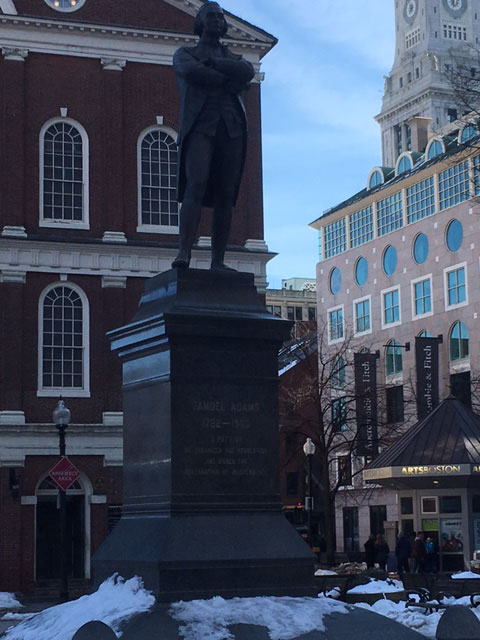
Today in Masonic History we present The Freedom Trail in Boston.
The Freedom Trail in Boston, Massachusetts are sites that are related to the American Revolution, in and around the city.
Recently I had the opportunity to travel to Boston, Massachusetts. Boston is arguably the birth place of the American Revolution, although there are numerous other locations that played parts in the events leading up to the American Revolution.
One of the things you can do while in Boston is The Freedom Trail. A walking tour of a variety of locations that were part of the founding of the United States of America. You can go on a paid tour or you can walk the route yourself following a map or a row of bricks that is laid down around the city. As I walked the trail, I took note of a few items that were of significance to Freemasonry, here are just a few of them.
One of the first items on the tour, that directly related to Freemasonry is a statue of Samuel Adams. The statue stands in front of Faneuil Hall which is part of the area that makes up Quincy Market.
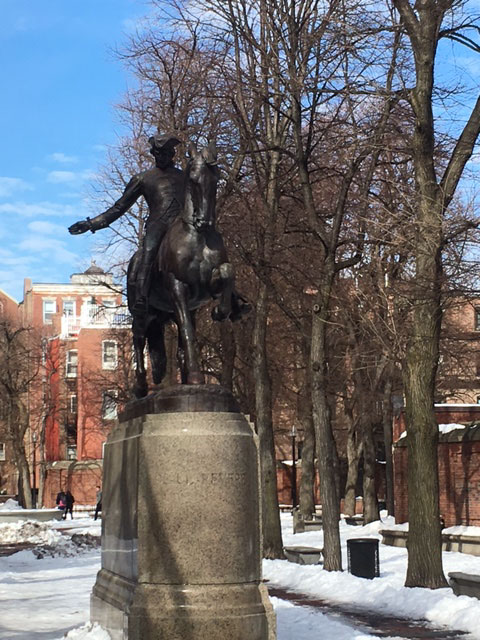 Next, masonicly, you come to a statue of Paul Revere. Paul Revere was a silver smith in Boston at the time of the revolution. He also famously depicted the Boston Massacre in an engraving. The Boston Massacre occurred when a group of British soldiers were under attack by an angry mob in Boston. The soldiers open fired killing a number of people in the mob. Revere and other Patriots propagandized the events to help stir support for the cause of the Revolution.
Next, masonicly, you come to a statue of Paul Revere. Paul Revere was a silver smith in Boston at the time of the revolution. He also famously depicted the Boston Massacre in an engraving. The Boston Massacre occurred when a group of British soldiers were under attack by an angry mob in Boston. The soldiers open fired killing a number of people in the mob. Revere and other Patriots propagandized the events to help stir support for the cause of the Revolution.
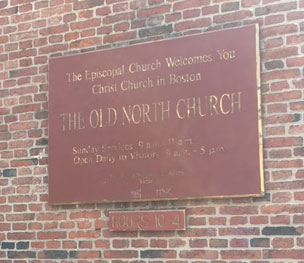 Next along the tour, was the Old North Church, which does not have any masonic significance except it is where Revere famously sent his "One if by land, two if by sea" message.
Next along the tour, was the Old North Church, which does not have any masonic significance except it is where Revere famously sent his "One if by land, two if by sea" message.
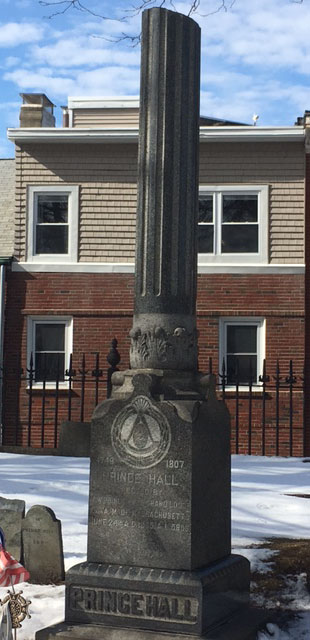 Just up the street from the Old North Church is Granary Burial Ground. The cemetery sits on top of a hill in Boston and looks out over the bay. People and their family members associated with the Revolution are buried there. This includes Revere and members of Benjamin Franklin's family. As you look around the cemetery most of the markers are pieces of slate with worn writing on them. That is except for one that is on one end of the cemetery. For a Freemason the monument will easily draw your attention due to it's design. The monument is a broken column with an inscription below. It was erected in 1895 by the Most Worshipful Prince Hall Grand Lodge of Massachusetts in honor of Prince Hall. Prince Hall around the time of the Revolution joined with other free Africans in the Boston area to form their own Freemason Lodge. It was not until 1805, the year after Hall's passing that a Grand Lodge system was created bearing his name.
Just up the street from the Old North Church is Granary Burial Ground. The cemetery sits on top of a hill in Boston and looks out over the bay. People and their family members associated with the Revolution are buried there. This includes Revere and members of Benjamin Franklin's family. As you look around the cemetery most of the markers are pieces of slate with worn writing on them. That is except for one that is on one end of the cemetery. For a Freemason the monument will easily draw your attention due to it's design. The monument is a broken column with an inscription below. It was erected in 1895 by the Most Worshipful Prince Hall Grand Lodge of Massachusetts in honor of Prince Hall. Prince Hall around the time of the Revolution joined with other free Africans in the Boston area to form their own Freemason Lodge. It was not until 1805, the year after Hall's passing that a Grand Lodge system was created bearing his name.
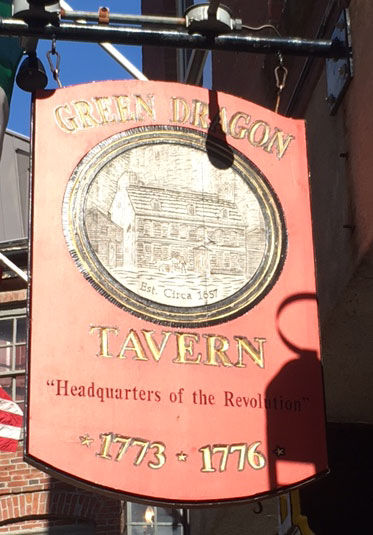 The last stop on The Freedom Trail, at least for me, was lunch at the Green Dragon Tavern. The Green Dragon Tavern was the home of St. Andrews Lodge and the Sons of Liberty who planned the Boston Tea Party. The two organizations shared many of the same members. The Green Dragon Tavern that currently exists in Boston is not in the same place as the original Green Dragon. Although their place mats state the original Green Dragon opened in 1657, it is unclear if the current restaurant is the namesake of the original or if it is a continuation of the original establishment, most likely the former.
The last stop on The Freedom Trail, at least for me, was lunch at the Green Dragon Tavern. The Green Dragon Tavern was the home of St. Andrews Lodge and the Sons of Liberty who planned the Boston Tea Party. The two organizations shared many of the same members. The Green Dragon Tavern that currently exists in Boston is not in the same place as the original Green Dragon. Although their place mats state the original Green Dragon opened in 1657, it is unclear if the current restaurant is the namesake of the original or if it is a continuation of the original establishment, most likely the former.
These are just some of the sights that can be seen on the Freedom Trail that connect the American Revolution with the Masonic Fraternity.
This article provided by Brother Eric C. Steele.

